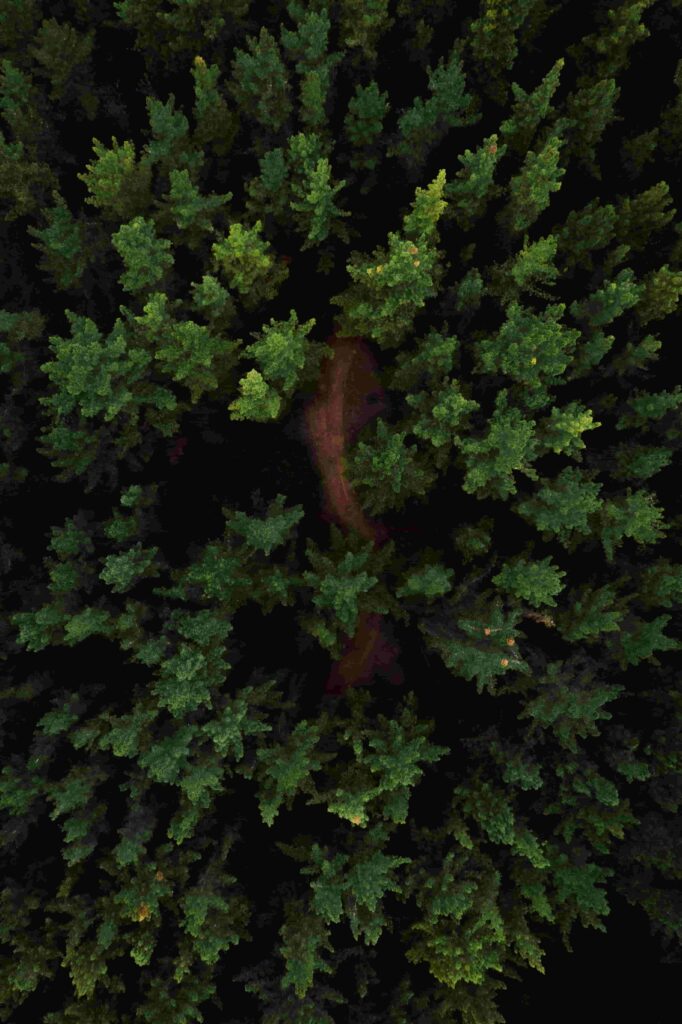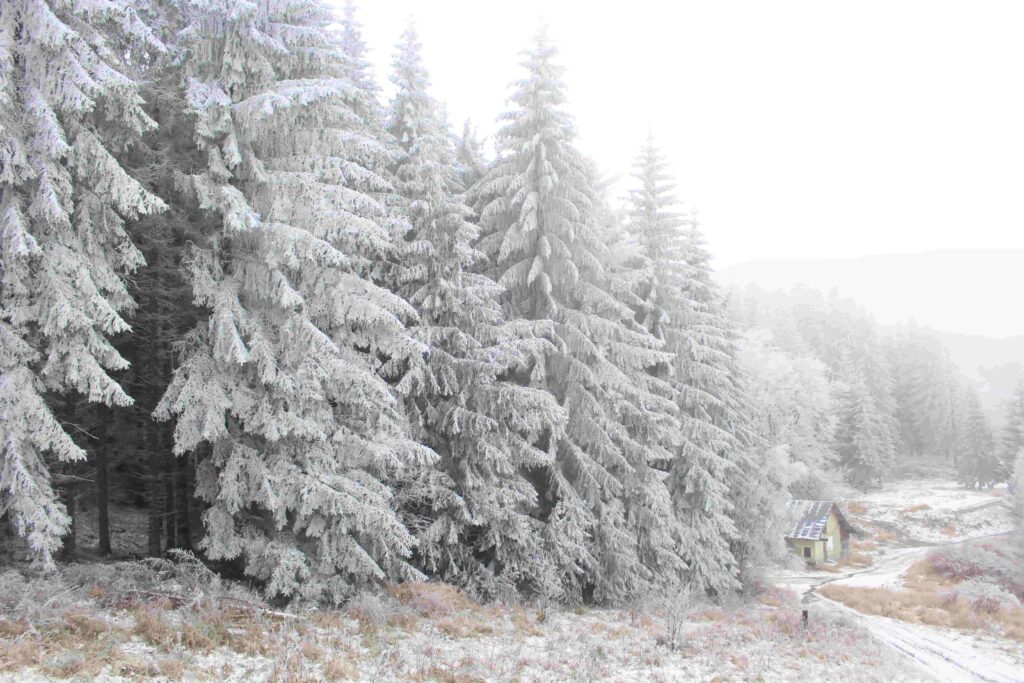Table of Contents
- Introduction
- What Are Coniferous Forests?
- The Dominance of Evergreen Needles
- The Four Distinct Seasons
- Biodiversity in Coniferous Forests
- The Crucial Role in the Ecosystem
- Threats to Coniferous Forests
- Conservation Efforts
- Exploring the Beauty of Coniferous Forests
- Winter Wonderland
- Birdwatching in the North
- Conclusion
- FAQs
Introduction
The northern regions of our planet hold a well-guarded secret: the mesmerizing Coniferous Forests, often referred to as the “Green Giants of the North.” These extraordinary ecosystems are not just nature’s masterpiece; they are vital to our planet’s health and balance. In this article, we will delve into the enchanting world of Coniferous Forests.
What Are Coniferous Forests?
Coniferous forests, also known as taiga or boreal forests, are characterized by their dense population of cone-bearing trees known as conifers, such as pines, spruces, and firs. These magnificent forests cover vast expanses of the Northern Hemisphere, offering a unique blend of beauty and ecological significance.
The Dominance of Evergreen Needles
The most striking feature of Coniferous type of Forests is the dominance of evergreen trees. These trees retain their needles year-round, a remarkable adaptation to the challenging northern climate. Their evergreen foliage provides a stark contrast to the winter landscape, creating a stunning visual spectacle.
The Four Distinct Seasons

Coniferous forests experience all four seasons, each with its own charm. Each changing season in these woodlands creates a new picture, from the luxuriant foliage of spring and summer to the vivid hues of autumn and the serenity of winter.
Biodiversity in Coniferous Forests
While Coniferous Forests may appear monotonous at first glance, they are teeming with life. These forests are home to a diverse range of wildlife, including moose, bears, lynx, and an array of bird species. Despite the cold winters and limited food resources, these forests support a variety of animals. Here are some of the key wildlife species you can find in these forests:
- Mammals:
- Moose: The moose, well adapted to the cold winters of coniferous forests, stands as the largest member of the deer family. They feed on woody vegetation and are often seen near lakes and rivers.
- Deer: Both white-tailed and mule deer can be found in coniferous forests. They are herbivores and an important food source for predators.
- Wolves: Wolves are apex predators in these ecosystems and play a crucial role in regulating prey populations.
- Lynx: These medium-sized cats are well adapted to hunting the snowshoe hare, which is abundant in coniferous type of forests.
- Black Bears: Black bears are omnivorous and hibernate during the winter in these forests.
- Red Fox: These foxes are adaptable and can be found in various forest types, including coniferous forests.
- Squirrels: Several squirrel species, like the red squirrel, are common in these forests and play an important role in seed dispersal.
- Birds:
- Owls: Various owl species, such as the great horned owl and the barred owl, are well-suited to the dense forests and are effective nocturnal hunters.
- Raptors: Hawks and eagles are often seen soaring over coniferous forests, preying on small mammals and birds.
- Boreal Chickadee: This bird is specially adapted to coniferous forests and can be found flitting among the branches.
- Crossbills: These finches have specialized bills that allow them to extract seeds from conifer cones.
- Grouse: Spruce and ruffed grouse are ground-dwelling birds that rely on coniferous forests for shelter and food.
- Small Mammals:
- Voles and Shrews: These small rodents are essential components of the forest food web and provide food for a variety of predators.
- Porcupines: These herbivores feed on conifer needles and tree bark.
- Marten and Fisher: These carnivorous mammals are skilled hunters in the forest understory.
- Amphibians and Reptiles:
- While coniferous forests are not typically associated with amphibians and reptiles due to their cold climate, some species like the wood frog and garter snake can be found in these environments.
- Insects:
- A variety of insects, including mosquitoes, black flies, and butterflies, are abundant in coniferous forests, providing food for birds and other insect-eating species.
Coniferous forests provide a critical habitat for these and other species, and they play a crucial role in maintaining biodiversity and ecological balance. Conservation efforts are essential to ensure the survival of these wildlife populations, particularly in the face of habitat loss and climate change.
The Crucial Role in the Ecosystem
Coniferous forests play a pivotal role in the global ecosystem. They act as carbon sinks, absorbing and storing vast amounts of carbon dioxide, helping to mitigate climate change. These forests also regulate the climate and provide essential habitats for countless species, contributing to the planet’s overall biodiversity.
Threats to Coniferous Forests
Unfortunately, Coniferous Forests face several threats, including deforestation, habitat destruction, and climate change. These challenges pose a significant risk to the health and survival of these magnificent ecosystems.
Conservation Efforts
Conservation efforts are essential to protect these forests, as they face various threats, including deforestation, climate change, and habitat degradation. The conservation of Coniferous Forests is a global effort. Many organizations and initiatives are actively engaged in preserving these essential ecosystems, ensuring their survival for future generations. Here are some key conservation measures and strategies for these forests:
- Protected Areas: Establishing and maintaining protected areas, such as national parks and wildlife reserves, is a fundamental conservation strategy. These areas provide safe havens for the diverse plant and animal species that inhabit coniferous forests. Strict regulations within these protected areas help mitigate human impacts.
- Sustainable Logging Practices: Implementing sustainable forestry practices is crucial to balance timber extraction with forest conservation. Sustainable logging includes selective harvesting, reforestation, and minimizing the impact on the surrounding ecosystems. Forest certification programs, like FSC (Forest Stewardship Council), promote responsible forestry practices.
- Habitat Restoration: Efforts to restore degraded coniferous forest habitats can include planting native tree species, removing invasive plants, and restoring natural water flow. These actions help rehabilitate ecosystems that have been disturbed by human activities.
- Fire Management: In coniferous forest ecosystems, fire is a natural occurrence, but human activity can make wildfires worse. While maintaining the ecological advantages of natural flames, managed fire regimes and controlled burns can help lower the likelihood of catastrophic fires.
- Climate Change Mitigation: Coniferous type of forests are highly susceptible to the impacts of climate change, including increased temperatures and altered precipitation patterns. Mitigation techniques for climate change, such cutting greenhouse gas emissions and encouraging carbon absorption in forests, should be combined with conservation initiatives.
- Biodiversity Monitoring: Regular monitoring of biodiversity within coniferous forests is essential for assessing the health of these ecosystems and identifying any emerging threats. This information can guide conservation priorities and strategies.
- Community Involvement: Engaging local communities in forest conservation is critical. This can involve education, awareness campaigns, and providing alternative livelihoods that reduce reliance on unsustainable activities like illegal logging.
- International Cooperation: Since these forests often cross national borders, international cooperation and agreements are crucial for their conservation. Initiatives like the Boreal Forest Conservation Framework aim to address transboundary conservation issues.
- Research and Education: Scientific research and public education are important components of coniferous forest conservation. Understanding the complex interactions within these ecosystems and their ecological importance helps build support for conservation efforts.
- Legislation and Policy: Strong legal frameworks and policies are necessary to protect these forests. These may include land-use regulations, wildlife protection laws, and incentives for sustainable forest management.
- Habitat Connectivity: Maintaining and restoring habitat connectivity is crucial to allow wildlife to move between different parts of coniferous forests. This prevents isolation of populations and promotes genetic diversity.
- Organizations Role: Many organizations around the world are dedicated to the conservation of coniferous forests. These organizations work on various aspects of forest protection, research, advocacy, and policy development. some notable organizations involved in the conservation of these forests are The Nature Conservancy, World Wildlife Fund (WWF), National Audubon Society, Boreal Songbird Initiative, Boreal Forest Conservation Framework, Siberian Environmental Center etc. These organizations play a critical role in raising awareness, advocating for policy change, conducting research, and implementing on-the-ground conservation efforts to protect coniferous forests and the biodiversity they support.
Conserving coniferous forests is not only vital for the survival of numerous species but also for the global climate and carbon cycling. These ecosystems store vast amounts of carbon, and their protection is crucial in the fight against climate change. Through a combination of conservation strategies, responsible land management, and international cooperation, it is possible to ensure the long-term health and sustainability of coniferous forests.
Exploring the Beauty of Coniferous Forests
For those eager to immerse themselves in the beauty of Coniferous Forests, there are various ways to explore these remarkable landscapes. Coniferous forests offer a plethora of outdoor activities, from hiking and fishing in the warmer months to snowshoeing and cross-country skiing in the winter. These activities provide a chance to connect with nature and experience the forests in different seasons. Whether through hiking, camping, or simply taking a leisurely stroll, the enchantment of these forests awaits.
Winter Wonderland

Winter in Coniferous Forests is a breathtaking spectacle. The snow-covered landscape, frozen lakes, and the opportunity to witness wildlife in their winter habitats create a unique and captivating experience.
Birdwatching in the North
The boreal forests of the Northern Hemisphere are a paradise for birdwatchers. These forests are home to a wide variety of avian species, making them an excellent destination for bird enthusiasts.
Conclusion
Coniferous Forests: Green Giants of the North are not only a testament to nature’s grandeur but also a crucial component of our planet’s ecological balance. Their beauty, resilience, and ecological significance make them an invaluable treasure worth protecting.
FAQs
Are Coniferous Forests only found in North America?
No, Coniferous Forests are found in the Northern Hemisphere, covering parts of North America, Europe, and Asia.
What are the major threats to Coniferous Forests?
Major threats include deforestation, habitat destruction, and climate change, which can disrupt their delicate ecosystems.
Can I visit Coniferous Forests year-round?
Yes, these forests offer different experiences throughout the year, making them an excellent destination for both summer and winter activities.
Are guided tours available for exploring Coniferous Forests?
Yes, guided tours and nature programs are available in many regions, allowing you to explore Coniferous Forests safely and learn more about their unique features.
How do Coniferous Forests contribute to climate change mitigation?
Coniferous Forests act as carbon sinks, absorbing and storing significant amounts of carbon dioxide, which helps reduce greenhouse gas emissions.

